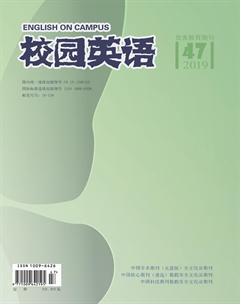Translator’s Subjectivity : A Hermeneutic Perspective
【Abstract】This thesis aims to examine the translators subjectivity from a Hermeneutic perspective which elucidates the four moves: trust, aggression, incorporation and compensation in the translation activity.
【Key Words】translators subjectivity; Hermeneutic
【作者簡介】韦茁,上海应用技术大学外语学院。
Etymologically, the term “hermeneutics” can be traced back to the ancient Greek mythology, wherein the god Hermes is a messenger, responsible for conveying the chief God Zeus divine edict to the human world. Since the language of the divine world is different from that of the secular world, he has to do the duties of interpreting and clarifying the divine edict so as to make it intelligible to human beings. “Hermeneutics” therefore had meant ‘interpreting and disclosing messages, especially those hidden behind the apparent meaning and continued to be developed into a philosophy pivoting on studying human understanding. Hermeneutics in the West has undergone mainly several phases of development. Then H.G.Gadamer has developed this study to that focusing on the nature and characteristics of “understanding”, or rather, “interpretation” together with situations and a universal law which conditions this activity.
Then in the preface to his milestone work After Babel, Steiner puts forward that “To understand is to decipher. To hear significance is to translate”. He holds that it is absolutely impossible to duplicate the original meaning of the source text in the target text, as translation inevitably involves the translators subjective interpretation of the source text. He sets up his famous fourfold hermeneutic model of translation and goes on to elucidate the four moves: trust, aggression, incorporation and compensation. In the translation activity, first comes initiative trust, an investment of belief, “underwritten by previous experience”(Steiner,2004;313), in the meaningfulness, in the “seriousness” of the source text. Then all understanding, or rather, translation begins whereby the translator “invades” the original, “extracts” and “bring home” the hidden messages and meaning in the original. The third move incorporation, the ultimate purpose of aggression is the import and embodiment of meaning and of form in the target language. However, the target semantic field “is already extant and crowded”, and the translator has to “padded, embroidered, read into or “skimped, elided, cut out awkward corners” (Steiner,2004;318). Then the final move is for the translator to make endeavors to restore the balance of forces, of integral presence, which his appropriative comprehension has disrupted. Steiner thereupon summarizes that “the enactment of reciprocity in order to restore balance is the crux of the métier and morals of translation”(Steiner,2004;316)
Gadamers “prejudice” and “fusion of horizon” are among other essential concepts of Hermeneutics contributing to the approach to the translators subjectivity. “Prejudice” is the judgment and orientation of an interpreter formed under certain historical conditions. It not only demonstrates the conservation of history but also embodies mans openness to history. This historicality is not a hindrance to understanding but a condition of Hermeneutic motion. While by “fusion of horizons”, Gadamer suggests that different historical situations lead to different horizons, and different individuals/texts have different horizons, which are not closed; instead, they are open. An interpreter keeps interacting with a text so as to enrich and broaden his/her own horizons and finally form new horizons. The fusion of horizons occurs between the past experience that is embodied in the text and the present experience of the reader.
Since, as quoted above, “to understand is to decipher and to hear significance is to translate”, these Hermeneutic concepts also find expression in translation. When the translator who never leaves his/her subjectivity behind endeavors to understand the indeterminacies and implied meaning in the original , it is also a process whereby he/she, with his/her own horizon, approaches the horizon of the text, thus achieving the “fusion of horizon”.
In light of Hermeneutic Theory, the translator exercises his/her subjectivity in each move of the understanding and representation of the original text, be it “trust, “aggression”, “incorporation”, “compensation” or “fusion of horizon”. Inevitably, the translator feeds his/her own beliefs, knowledge, attitudes, etc, into the text processing, so much so that the translation will somewhat reflect the translators own mental and cultural outlook; his/her historical background and subjectivity will become traceable in the target text.
References:
[1]Andre Lefevere, 2004. Translation,/History/Culture-A Sourcebook. Shanghai: Shanghai Foreign Language Education Press.

